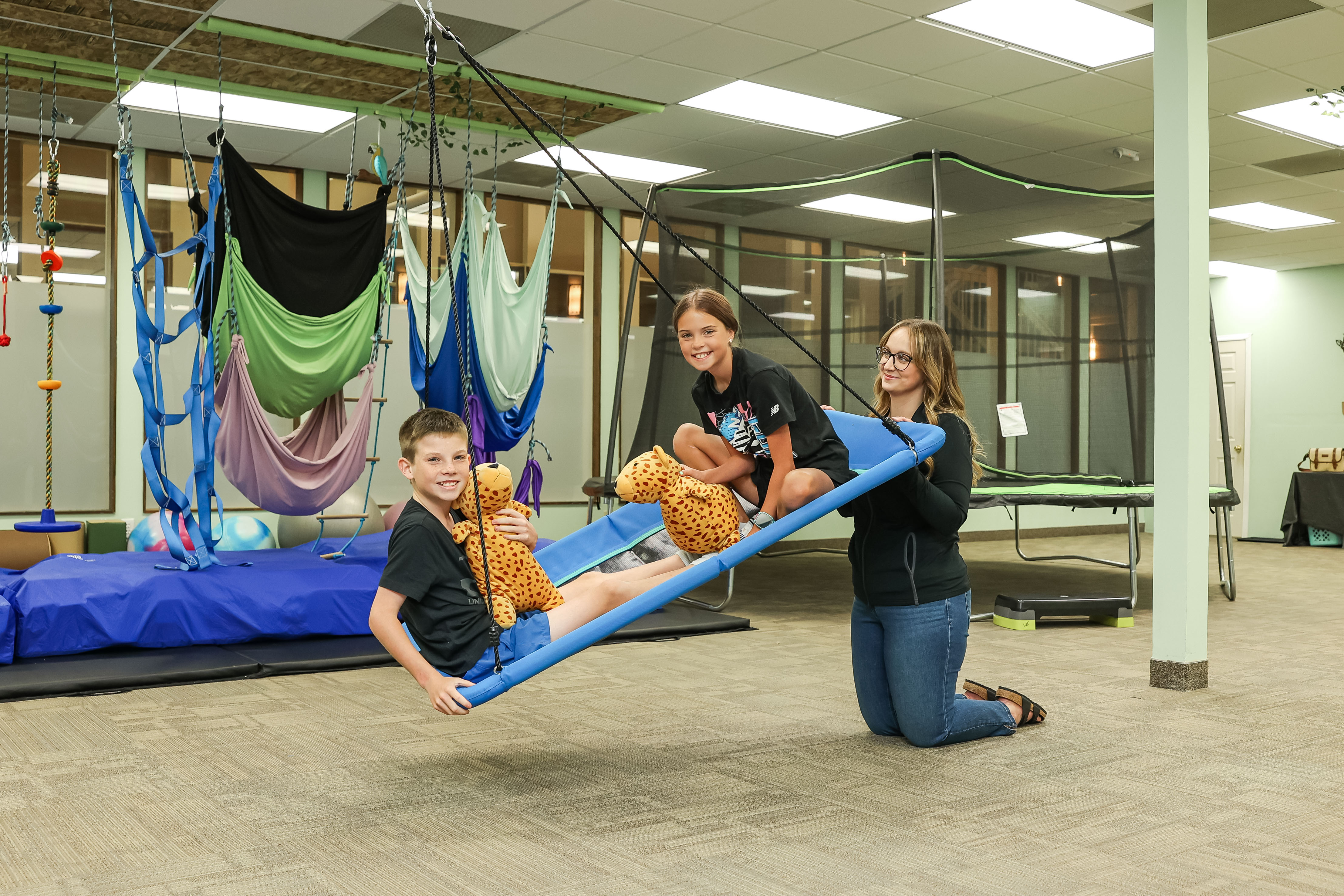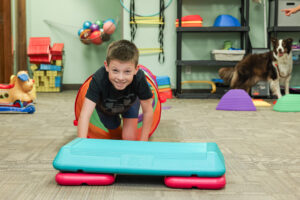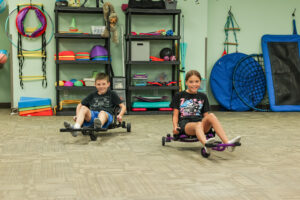
At Little Legends Therapy, we utilize a “bottom-up” approach to therapy. You may be asking yourself “what is a bottom-up approach and how does it differ from other approaches to therapy?”
A bottom-up approach in occupational therapy refers to a method of intervention that focuses on improving foundational skills and underlying abilities before addressing higher-level tasks and functional goals. In the context of pediatric occupational therapy, this approach typically emphasizes developing or strengthening basic sensory, motor, cognitive, and perceptual functions that are critical for a child to engage in more complex activities.
Why is it effective for pediatric occupational therapists?
- Addresses the Root Causes of Challenges:
- In children, many functional difficulties arise from underlying issues such as sensory processing problems, motor skill deficits, or cognitive limitations. A bottom-up approach works on improving these foundational areas, such as hand-eye coordination, proprioception, or fine motor control, which can lead to more noticeable improvements in higher-level skills like writing, playing, or self-care tasks.
- Personalized Intervention:
- This approach allows therapists to tailor interventions to the individual child’s specific needs. For example, a child who struggles with handwriting might first work on strengthening hand muscles or improving their visual-motor integration. By focusing on the specific underlying deficits, therapists can create a more personalized and effective treatment plan.
- Promotes Developmental Progression:
- Children develop in a sequential, predictable manner. Many motor and cognitive abilities build on simpler skills. A bottom-up approach supports this natural progression by addressing basic skills before attempting more complex tasks. For instance, improving hand strength or grip can help a child develop better control for activities like drawing or feeding themselves.
- Supports Neuroplasticity:
- The brain is highly adaptable, especially in children. By targeting foundational skills, a bottom-up approach facilitates neuroplasticity—the brain’s ability to reorganize itself by forming new neural connections. This can be particularly beneficial for children with developmental delays, sensory processing disorders, or neurodevelopmental disorders like autism or ADHD.
- Fosters Confidence and Independence:
- As foundational skills improve, children often experience greater success with functional tasks. For example, a child who has improved motor planning and coordination might feel more confident in playing games or participating in school activities. This can increase their motivation and sense of independence, further boosting their development.
- Holistic Approach:
- A bottom-up approach is holistic in nature because it takes into account all aspects of a child’s development—physical, cognitive, emotional, and social. By building these areas, therapists help create a stronger foundation for the child’s overall functioning, including academic performance, social interactions, and self-regulation.
- Long-Term Effectiveness:
- Addressing foundational skills can result in more sustainable and long-lasting improvements. By strengthening the child’s base abilities, they are more likely to be able to generalize and apply those skills to different contexts, making interventions more effective in the long run.
Examples of Bottom-Up Interventions in Pediatric Occupational Therapy:
- Sensory Integration Therapy: Focuses on improving how a child processes sensory input (e.g., touch, movement, sounds), which can impact their ability to engage in daily activities and interact with others (swinging, jumping, and playing with water beads are just tasks that can be utilized in therapy).
- Motor Skill Development: Activities like hand strengthening, fine motor tasks, and body coordination exercises to improve skills necessary for tasks like eating, dressing, or playing sports.
- Cognitive Skills Training: Focusing on memory, attention, and problem-solving, which are important for academic tasks and social interactions. Activities like setting up and obstacle course, completing a craft, or playing board games are all great therapy interventions!
- Visual-Motor Integration: Activities that combine visual tracking, hand-eye coordination, and spatial awareness, crucial for tasks such as writing or drawing.
The bottom-up approach in pediatric occupational therapy is effective because it builds foundational skills that children need to perform everyday tasks. By addressing sensory, motor, and cognitive challenges at their core, this approach helps children gain the tools they need to succeed in more complex and functional tasks, ultimately leading to improved outcomes and a better quality of life.
If you fell like this style of therapy would be a good fit for your child and are interested in getting your child into therapy services with us, please call or text our office line at 406-647-0042. You can also visit our “Get Started Here” page for more information.





No comment yet, add your voice below!